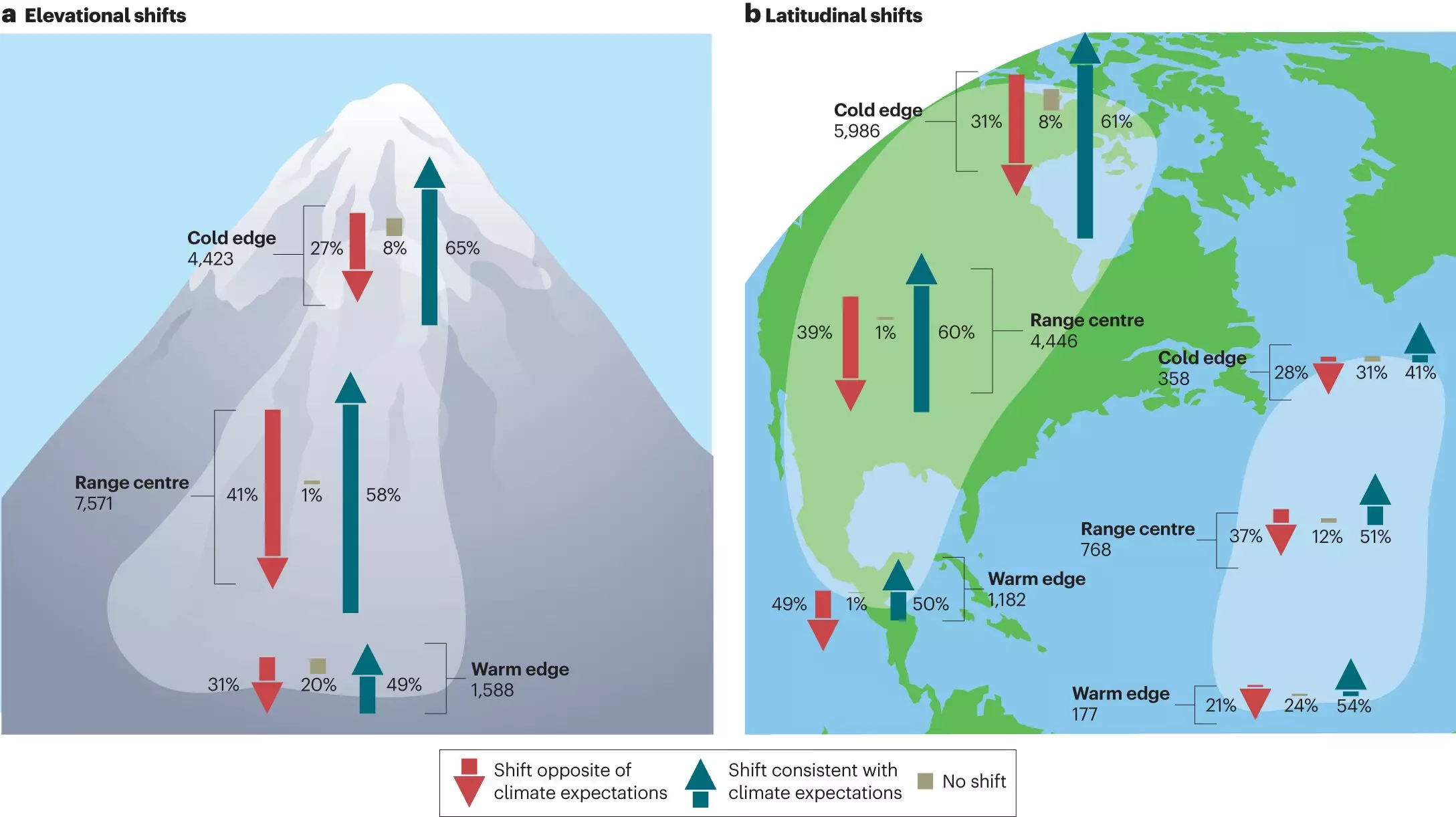The shifting distributions of species caused by climate change are rewriting the ecological maps of our planet, yet this phenomenon is far more complex than a simple move toward cooler habitats. Recent research led by McGill University, analyzing data from over 26,000 species worldwide, highlights a critical nuance: while temperature rise is a key driver pushing many species to new ranges, it alone doesn’t paint the full picture. Nearly 41% of species defy expectations by either remaining static or moving in directions inconsistent with a warming climate. This revelation challenges existing resource management frameworks that largely assume species will relocate predictably along thermal gradients.
The implications of these unpredictable shifts are profound. Mosquitoes expanding into previously temperate regions introduce diseases like malaria into vulnerable healthcare systems. Commercial fish migrating across international waters prompt complex jurisdictional and economic tensions. Such real-world consequences underline the urgent need to incorporate a more sophisticated understanding of species movement into policy and conservation efforts.
Life Cycles, Landscape, and Other Hidden Influencers
Digging deeper, McGill’s team suggests that intrinsic biological traits and environmental contexts heavily influence whether and how species respond to warming. Variables such as a species’ life cycle, dispersal capacity, sensitivity to temperature change, and habitat characteristics can either facilitate or hinder range shifts. For example, species with longer generation times or limited ability to disperse may be ‘trapped’ in warming habitats, unable to migrate, while others with rapid growth or high mobility may find new territories more easily.
Thus, relying solely on global average temperature trends to predict ecological responses is grossly insufficient. Incorporating species-specific biology and local environmental variables can vastly improve models forecasting range shifts. Such enhanced predictive power is essential for designing effective conservation measures that anticipate ecological surprises rather than react to crises after they emerge.
Geographical Biases and Knowledge Gaps in Range Shift Data
A significant caveat in our current understanding is the geography and scope of species monitoring. The vast majority of existing data comes from temperate zones—Europe and North America—where seasonal variation follows a familiar four-season pattern. This skews research focus and limits its applicability in regions dominated by different climatic regimes, such as tropical areas with wet and dry seasons, where species might respond differently to warming.
Moreover, marine ecosystems remain underrepresented in studies of range shifts, even though oceans are experiencing rapid temperature increases and changes in species distribution. The discrepancies between terrestrial and marine responses highlight an urgent need to broaden the scope of biodiversity monitoring to gain a global perspective.
From Data to Action: Challenges for Policy and Conservation
The present knowledge gaps and complexity of species movements pose substantial challenges for policymakers and conservationists. Traditional resource management strategies often assume static species ranges, which ignores the dynamic realities driven by climate change. Consequently, infrastructure, healthcare, fisheries management, and biodiversity conservation plans risk becoming outdated or ineffective.
What is clear from the McGill-led study is that improved, long-term biodiversity monitoring frameworks are vital. Expanding global databases to include diverse taxa, particularly from neglected ecosystems, and integrating species-specific traits will enhance our ability to anticipate and manage ecological shifts. This proactive approach is necessary to reduce conflicts over resources, mitigate emerging health threats, and preserve ecosystem functions in the face of accelerating climate change.
The complexity uncovered in species shift dynamics forces us to confront a sobering truth: simplistic assumptions no longer hold. Both the natural world and human societies must adapt to an unfolding reality where ecological change is uneven, multifaceted, and unpredictable. Embracing this complexity is not just a scientific challenge—it is a societal imperative.

